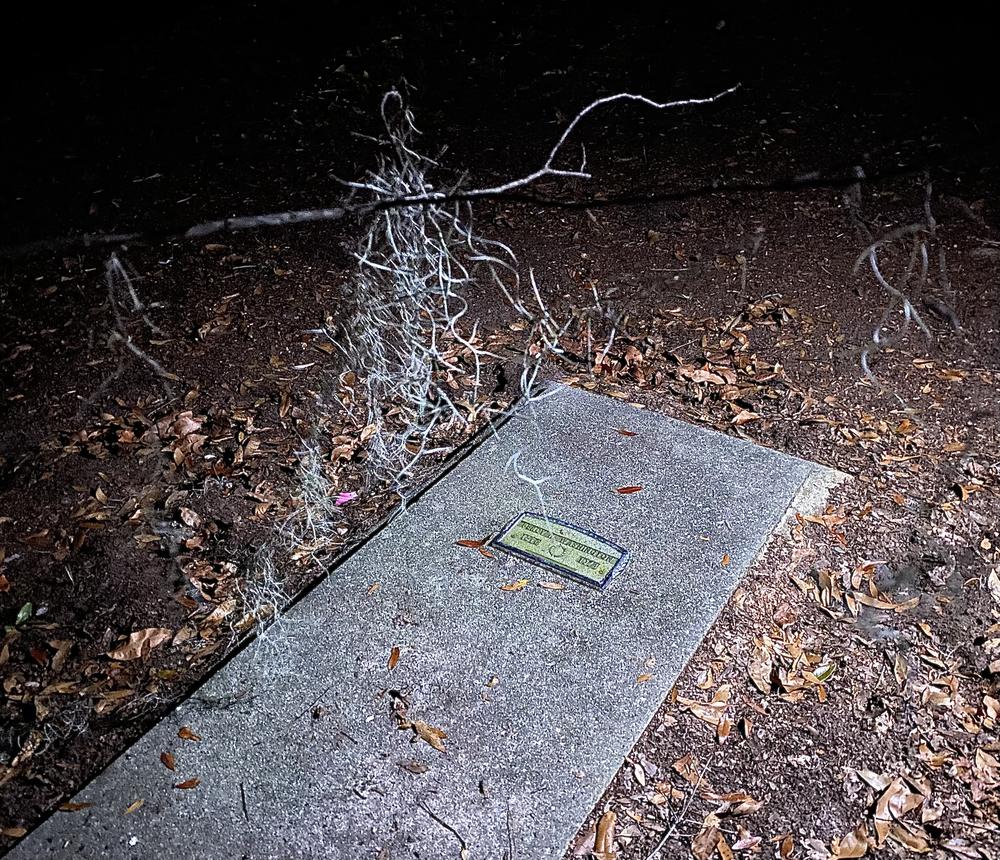
Caption
The book gets its name from the Beaufort, S.C., grave of Percy H. Washington, known in the book as “Dr. Buzzard.” Voodoo priestess “Minerva” (whose real name was Valerie Fennell Boles) went here at the behest of Jim Williams to put a hex on the district attorney prosecuting him for murder.
Credit: Benjamin Payne / GPB News


